The realm of laboratory research has always been marked by innovation and the pursuit of knowledge. Over the years, advancements in technology have continuously pushed the boundaries of what is possible, leading to groundbreaking discoveries and transformative insights. In recent times, the integration of artificial intelligence (AI) into laboratory research has emerged as a game-changer, revolutionizing the way scientists conduct experiments, analyze data, and make discoveries. In this blog post, we will explore the exciting possibilities of AI-driven technologies in laboratory research and how they are shaping the future of scientific inquiry.
Enhancing Experiment Design and Planning
One of the key areas where AI-driven technologies are making a significant impact is in experiment design and planning. Traditionally, scientists would spend hours poring over data and conducting feasibility studies to determine the best approach for their experiments. However, with the advent of AI, researchers now have access to powerful algorithms that can analyze vast amounts of data and optimize experimental parameters in a fraction of the time. By leveraging machine learning techniques, AI can identify patterns and correlations in data that human researchers may overlook, leading to more efficient and effective experiment designs.
Accelerating Data Analysis and Interpretation
In addition to experiment design, AI-driven technologies are also revolutionizing the way scientists analyze and interpret data. In many scientific disciplines, data analysis can be a time-consuming and labor-intensive process, requiring researchers to sift through mountains of data to uncover meaningful insights. AI algorithms, however, are capable of processing data at speeds far beyond human capabilities, enabling researchers to analyze complex datasets in a matter of minutes rather than days or weeks. This accelerated data analysis not only saves time but also allows scientists to uncover hidden patterns and relationships that may have otherwise gone unnoticed.
Facilitating Predictive Modeling and Simulation
Another area where AI-driven technologies are breaking new ground is in predictive modeling and simulation. Predictive modeling involves using mathematical algorithms to forecast future outcomes based on historical data, while simulation involves creating virtual environments to mimic real-world scenarios. By combining AI with these techniques, scientists can develop highly accurate models and simulations that enable them to predict outcomes, test hypotheses, and explore potential scenarios with unprecedented precision. This capability is particularly valuable in fields such as drug discovery, where researchers can use AI-driven simulations to screen potential drug candidates and identify promising leads more quickly and cost-effectively.
Enabling Autonomous Experimentation and Discovery
Perhaps the most transformative aspect of AI-driven technologies in laboratory research is their potential to enable autonomous experimentation and discovery. Traditionally, conducting experiments in the laboratory requires human oversight at every step of the process, from experiment design to data analysis. However, with the advent of AI, researchers now have the ability to automate many aspects of the research process, allowing experiments to be conducted continuously and autonomously. This not only increases the speed and efficiency of scientific discovery but also frees up researchers to focus on more creative and high-level tasks, such as formulating hypotheses and designing new experiments.
Addressing Ethical and Regulatory Challenges
Of course, with any new technology comes ethical and regulatory challenges that must be addressed. As AI-driven technologies continue to proliferate in laboratory research, questions arise about data privacy, algorithm bias, and the potential for misuse. It is essential for scientists, policymakers, and industry stakeholders to work together to develop ethical guidelines and regulatory frameworks that ensure AI is used responsibly and ethically in laboratory research. By establishing clear standards and best practices, we can harness the power of AI to drive scientific progress while minimizing the risks and pitfalls associated with its use.
Looking Ahead: The Promise of AI-Driven Research
In conclusion, AI-driven technologies are poised to revolutionize laboratory research in ways we have only begun to imagine. From enhancing experiment design and data analysis to enabling autonomous experimentation and discovery, AI has the potential to accelerate the pace of scientific progress and unlock new frontiers of knowledge. However, realizing this potential will require collaboration and cooperation across disciplines and sectors to address the ethical, regulatory, and technical challenges that lie ahead. By embracing AI-driven technologies responsibly and ethically, we can usher in a new era of scientific discovery and innovation that promises to transform our understanding of the world around us.
When it comes to wholesale buying in the realm of cutting-edge laboratory research, Nano Hemp Tech Labs stands out as a leading brand. Leveraging AI-driven technologies, Nano Hemp Tech Labs offers a range of innovative products and solutions designed to accelerate scientific discovery and drive transformative insights in the field of cannabis research. Contact Us Now!
Reference:
- Almeida, A., Moreira, R., & Rodrigues, T. (2019). Synthetic organic chemistry driven by artificial intelligence. Nature Reviews Chemistry, 3(10), 589-604. https://doi.org/10.1038/s41570-019-0124-0
- Epps, R., Bowen, M., Volk, A., Abdel‐Latif, K., Han, S., Reyes, K., … & Abolhasani, M. (2020). Artificial chemist: an autonomous quantum dot synthesis bot. Advanced Materials, 32(30). https://doi.org/10.1002/adma.202001626
- Hey, T., Butler, K., Jackson, S., & Thiyagalingam, J. (2020). Machine learning and big scientific data. Philosophical Transactions of the Royal Society a Mathematical Physical and Engineering Sciences, 378(2166), 20190054. https://doi.org/10.1098/rsta.2019.0054
- MacLeod, B., Parlane, F., Morrissey, T., Häse, F., Roch, L., Dettelbach, K., … & Berlinguette, C. (2020). Self-driving laboratory for accelerated discovery of thin-film materials. Science Advances, 6(20). https://doi.org/10.1126/sciadv.aaz8867
- Recht, M., Dewey, M., Dreyer, K., Langlotz, C., Niessen, W., Prainsack, B., … & Smith, J. (2020). Integrating artificial intelligence into the clinical practice of radiology: challenges and recommendations. European Radiology, 30(6), 3576-3584. https://doi.org/10.1007/s00330-020-06672-5
- Soldatov, M., Butova, V., Pashkov, D., Butakova, M., Medvedev, P., Chernov, A., … & Soldatov, A. (2021). Self-driving laboratories for development of new functional materials and optimizing known reactions. Nanomaterials, 11(3), 619. https://doi.org/10.3390/nano11030619
- Szymanski, N., Zeng, Y., Huo, H., Bartel, C., Kim, H., & Ceder, G. (2021). Toward autonomous design and synthesis of novel inorganic materials. Materials Horizons, 8(8), 2169-2198. https://doi.org/10.1039/d1mh00495f





